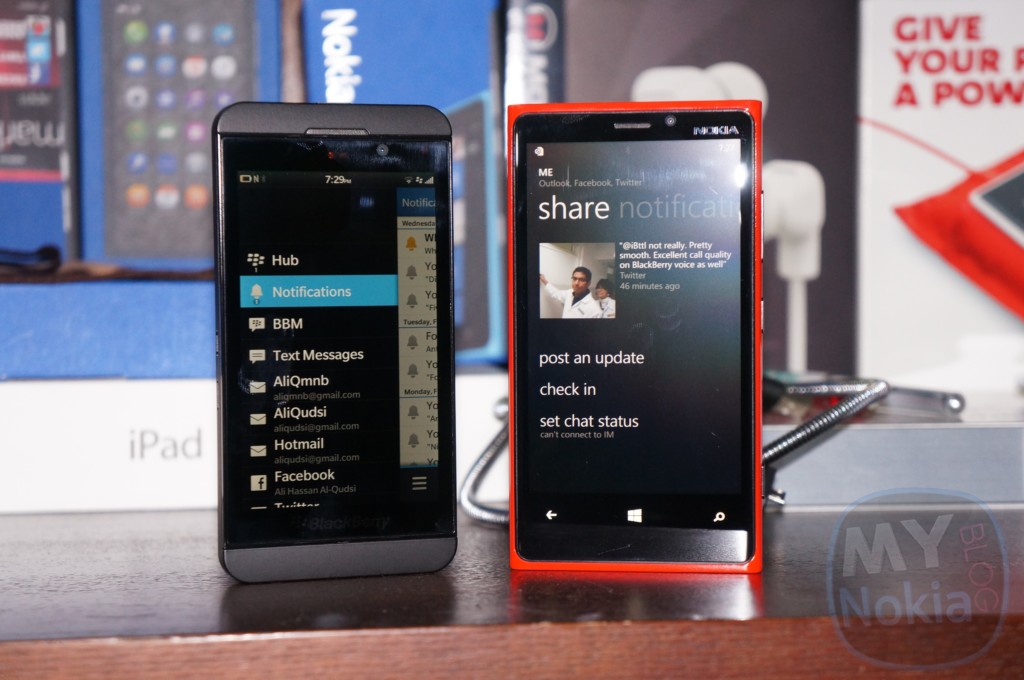Report: Blackberry’s Downfall; Many Parallels to Nokia’s
 Blackberry is in a very tough spot at the moment, with it’s future extremely doubtful; after a recent buyout offer from another Canadian company. As things dwindle down, more details about how Blackberry got in this mess have come to surface, as detailed in a very long 9 page report by theglobeandmail. Some factors about BB’s decisions parallel Nokia’s own almost exactly and seems to be the same story, from a different angle.
Blackberry is in a very tough spot at the moment, with it’s future extremely doubtful; after a recent buyout offer from another Canadian company. As things dwindle down, more details about how Blackberry got in this mess have come to surface, as detailed in a very long 9 page report by theglobeandmail. Some factors about BB’s decisions parallel Nokia’s own almost exactly and seems to be the same story, from a different angle.
Blackberry, as with Nokia dropped the ball with the iPhone release, at the time BB were one of the largest (if not the largest) market share holder in the US, but similarly to Nokia they dismissed the iPhone’s touch screen as a gimmick, and their ego and self esteem clouded their judgement. What neither company factored in was what a colossal affect the software aspect of Apple (apps), would have on the market thinking that users would always choose Hardware over Software.
But smartphone users were rapidly shifting their focus to software applications, rather than choosing devices based solely on hardware. RIM found it difficult to make the transition,
Once the true threat of Apple was recognized, Verizon wireless (the largest carrier in the US) who were cut out of Apple’s earning due to their exclusivity deal with At&t wanted a hero phone of their own to compete against the iPhone, and gave BB the chance to make it. BB’s response was the BB Storm which as you might guess, wasn’t a huge success.
RIM executives jumped at the chance. At one management meeting, Mr. Balsillie called it RIM’s most important strategic opportunity since the launch of its two-way e-mail pager.
The product was the BlackBerry Storm. It was the most complex and ambitious project the company had ever done, but “the technology was cobbled together quickly and wasn’t quite ready,†said one former senior company insider who was involved in the project.
The product was months late, hitting the market just before U.S. Thanksgiving in 2008. Many customers hated it. The touchscreen, RIM’s first, was awkward to manipulate. The product ran on a single processor and was slow and buggy. Mr. Balsillie put on a brave face, declaring the launch to be “an overwhelming success,†but sales lagged the iPhone and customer returns were high.
Similarly Nokia even had their own full touch screen device in the pipeline before the iPhone was even released, but dropped the ball and thought it wasn’t what consumers wanted, for fear that it wouldn’t have been accepted. Blackberry faced a similar issue, not knowing if they should embrace the touchscreen phenomenon or hang on to their roots and winning horse, QWERTY phones. Eventually falling behind without making a definitive decision, which was delayed by management multiple times along the way to the store shelves.
The other major parallel between the two is the software aspect, where both had to move on to a more modern system (BB to QNX, and Nokia away from the lagging Symbian onto Meego/Maemo). Blackberry made the decision to rebuild BB10 from the bottom up, but had many obstacles on the way, including poor communication between their BB7 and BB10 teams.
There’s also the decision of both CEO’s (Heins & Elop) to go against the suggestions of their fellow board members, with Elop deciding to go WP against the advice of his board and team, and Heins choosing to go full out with the touch screen Z10 rather than stick to the trusted Qwerty phones.
There are a lot more interesting parallels between the two, and it’s definitely worth a read, so check out the full article at the link below:
Category: BB10, Blackberry, Lumia, Nokia, Windows Phone




Connect
Connect with us on the following social media platforms.